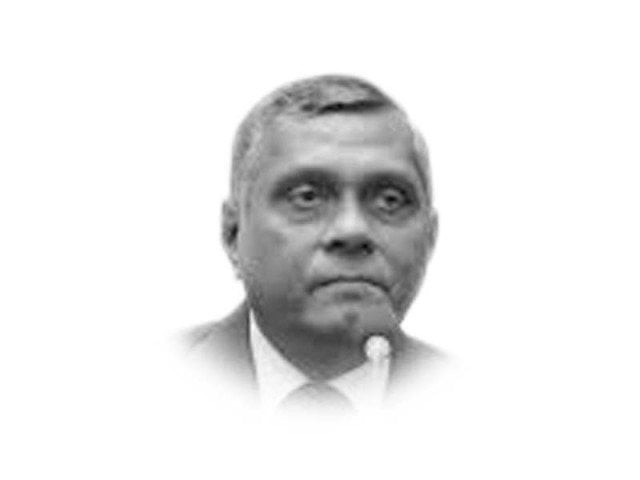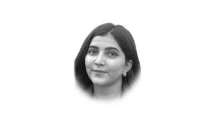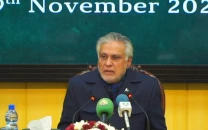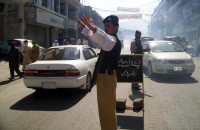Perils of exclusive development
It is yet to be seen how far the PTI government will go about meeting its commitment about inclusive development

Speaking before the students of University of Turbat, Balochistan, on November 13, Prime Minister Imran Khan rightly pointed out that for a strong federation, equal development of all federating units of the country is necessary. Referring to the economic asymmetry between Balochistan and other provinces of Pakistan, he lamented that past prime ministers and presidents were responsible for giving less attention to the impoverished province because they were more interested in exclusive rather than inclusive development.
Exclusive development is the essence of economic and social backwardness of Pakistan because resources, which should have been utilised in all the provinces of the country in a judicious manner, were concentrated in just a few areas. In 1974, when the military operation during prime minister ZA Bhutto’s government was launched against what were termed as rebellious chiefs of the Mengal and Marri tribes, it was claimed by the government that it was to emancipate the province from the clutches of Sardars who were against development and wanted to keep their people uneducated and backward. Forty-six years down the road, Balochistan is still underdeveloped despite projects launched under China-Pakistan Economic Corridor (CPEC) and in the absence of a middle class which acts as a catalyst in the process of development, the province despite possessing untapped mineral resources of $1 trillion, lags behind other parts of Pakistan.
And it is not only Balochistan which is underdeveloped; but large parts of rural Sindh, southern Punjab, former FATA and Khyber-Pakhtunkhwa are also facing the curse of social backwardness and disempowerment of people in terms of better education and good quality of life. How can inclusive development make a difference in transforming an underdeveloped country into a developed one and why exclusive, instead of inclusive development, is responsible for the mushrooming of issues which are economic, ethnic, lingual and cultural in nature? How can inclusive development be a game changer for Pakistan and ameliorate the socio-economic conditions of 220 million people of the country, particularly those belonging to Balochistan?
One can categorise four major causes of exclusive rather than inclusive development in Pakistan. First, from any standpoint, Pakistan is still a feudal and a tribal society where privileged classes are least interested in reducing societal asymmetry. During the days of United Pakistan, exclusive development in West Pakistan deepened a sense of deprivation among the Bengalis who happened to be in a majority and a major contributor of foreign exchange earnings for the country. The six points of the Awami League presented by Sheikh Mujibur Rahman focused on demanding inclusive development and reducing the economic gap between the two wings of Pakistan. Renowned economists from East Pakistan like Dr Rahman Sobhan spoke of economic disparity between the two wings and demanded adequate developmental funds. Unfortunately, no lessons were learned from the loss of East Pakistan by the governing elites and they sustained their age-old indifference and exploitation of resources of minority provinces namely Sindh and Balochistan.
Second, since the political, bureaucratic and military elites belonged to Punjab, particularly representing its central part, and cared more for the development of Lahore and adjoining districts, the bulk of developmental projects were launched and completed in that part of province which didn’t contribute much to the national exchequer. Orange Line, metro bus, Lahore-Rawalpindi, Faisalabad, Sialkot and Multan motorways rightly created resentment in minority provinces of Pakistan who blamed the PML-N governments of only caring to develop Punjab, particularly central Punjab. Exclusive development remained the hallmark of PML-N which illogically included the Orange Line under CPEC just to benefit some parts of Lahore. Had the amount spent on the Orange Line, which only catered to the transport needs of a small fraction of Pakistan’s population, been utilised for the inclusive development of infrastructure, all major roads and highways of Pakistan would have been renovated.
Third, corruption and nepotism particularly dealing with development is a stark reality particularly during the PPP and PML-N governments. As rightly said by Imran Khan, former president Asif Ali Zardari and former prime minister Nawaz Sharif were more interested in visiting Dubai and London rather than concentrating on Balochistan which during their tenure remained socially and economically backward. When major political parties cheat and let the people of Balochistan down along with so-called nationalist groups, one can observe a great deal of pessimism as far as a bright future of underdeveloped regions of Pakistan is concerned. Inclusive development cannot take place when local leadership is neither motivated nor committed to issues which cause poverty and social backwardness. This is exactly what the problem is with Balochistan and Sindh, which are far behind Punjab and K-P in education, infrastructure and major indicators of development.
Karachi is another case study of underdevelopment which is Pakistan’s commercial and industrial hub. A city which was once the federal capital of Pakistan and makes for 65% of the federal and 90% of Sindh’s revenue is rather known for massive corruption, broken roads and poor quality of life of people in terms of access to clean and safe drinking water. There one can observe unplanned urbanisation, proliferation of illegal settlements, pollution and poor public transport. Unfortunately, neither the Sindh government nor the city government or the Centre was able to save the city from the calamities of heavy monsoon rains this year because of a choked drainage system. A city of more than 25 million people is without a public transport system. The circular railway and green line projects remain to be functional. K-IV, a bulk water supply project, has failed to materialise as its cost has gone up to more than Rs150 billion. The absence of inclusive development for Karachi is responsible for crises, chaos and violence in this mega city.
Finally, inclusive development has failed to take place in Pakistan because of a non-serious and non-professional approach of those who matter. When human resource is not utilised and enormous corruption takes place in financial resources, development remains elusive and only superficial. Lack of proper accountability, transparency, political will, the culture of corruption and nepotism cause a lack of inclusive development. The reality is that exclusive development which has taken place in Lahore and some other parts of Punjab is because of vested interests of leadership which happens to be at the helm of affairs during the PML-N government. But, in case of the PPP, which has led the Sindh government for the last 12 years, one fails to see any sign of real development which can be reflected in good roads, motorways, sewage system, clean and safe drinking water and respectable public transport. While sitting in their comfort zones, PPP government officials have miserably failed to improve the quality of life for the people.
It is yet to be seen how far the PTI government will go about meeting its commitment about inclusive development because without clear, confident, honest, competent, persistent and visionary leadership, the vision to transform Pakistan from a backward to a modern welfare state would remain a pipe dream.
Published in The Express Tribune, November 20th, 2020.
Like Opinion & Editorial on Facebook, follow @ETOpEd on Twitter to receive all updates on all our daily pieces.











1729471601-0/image-(8)1729471601-0-208x130.webp)




COMMENTS
Comments are moderated and generally will be posted if they are on-topic and not abusive.
For more information, please see our Comments FAQ